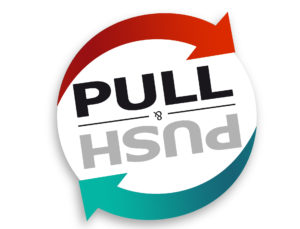 Satisfying the Production Capabilities of Today’s Fiber Laser Cutting Machines
Satisfying the Production Capabilities of Today’s Fiber Laser Cutting Machines
The economic principle behind Fibernomics is Lower Operating Costs + Faster Processing = Greater Profit and Earnings Potential. But Fibernomics isn’t just the economic advantage of owning a Fiber laser; it’s the overall economic advantage that is created when all of the “pull” and “push” demands are satisfied to meet the production capabilities of the Fiber laser.
Front-end Material “Pull” Demands
The “pull” demand of Fibernomics begins at the front-end where business software systems process orders into bills of materials and job routings, as well as programming systems that provide programs for the Fiber laser. All of these systems need to keep pace with the increased throughput and capacity created by the Fiber laser.
Yet the “pull” demand on the front-end does not end with a finished cutting program. The raw material must be ready without delays in presenting it to the laser for processing. Once the laser begins processing the jobs, the consistency of the cut material unloading and raw material loading cycle times becomes critical. Completing the unload/load cycles in the time while the machine is still processing the current sheet is critical to maintaining the advantages gained from high speed Fiber laser processing.
Eliminating non-productive time due to shift changes, break times and operator fatigue brings consistency to the process and consistency in maintaining estimated costs.
Increasing Speed and Reducing Cost
Automation provides consistency of process and significantly reduces non-productive idle time. Reducing the time from order-entry to the final cut part, reducing material utilization costs and reducing processing times are fundamental to the economic principle of Fibernomics. Utilizing a material storage tower in conjunction with an automated material load/unload unit greatly reduces the time from the order to the cut part and increases efficiency, capacity and overall throughput by as much as 30 percent on a Fiber laser cutting system. Consistency in operations reduces the overall cost per part.
The Solution
It’s no longer how a single piece of machinery will affect the fabrication process, but how all the machines and supporting automation and software technologies work together to create a cohesive and effective fabrication and business solution.
By Frank Arteaga, Head of Product Marketing, NAFTA Region
Bystronic Inc., Elgin, IL – Voice.bystronic@bystronic.com
